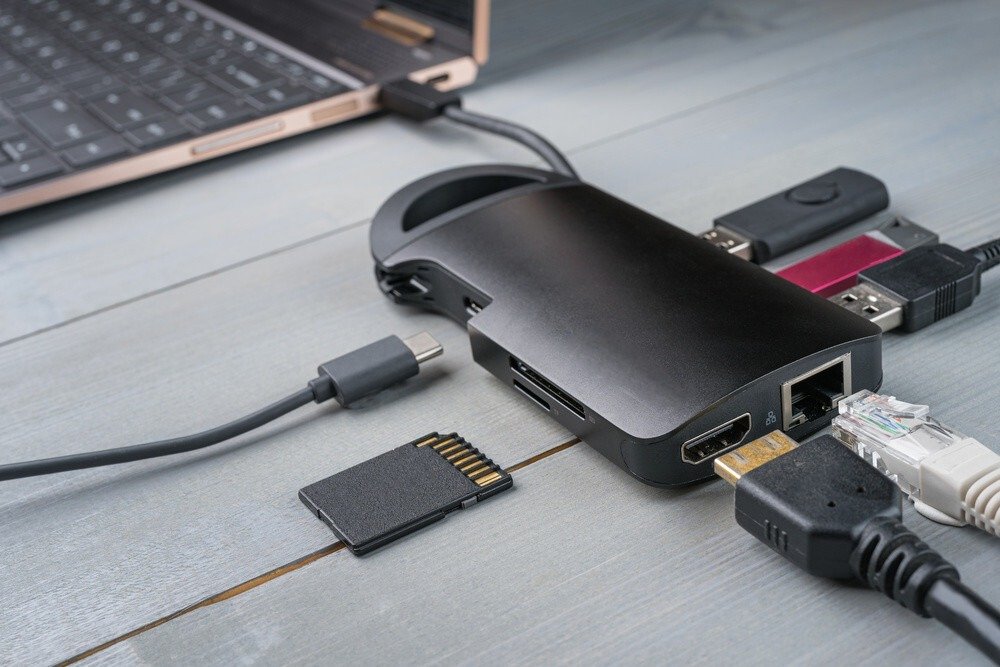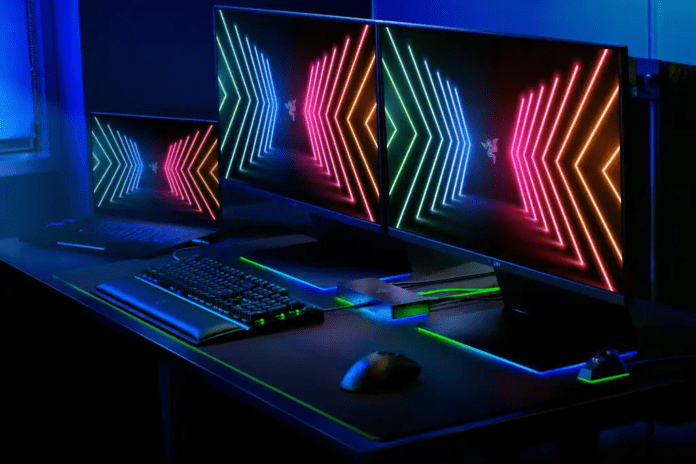Nowadays, laptops have become essential tools for work and leisure. Their portability and power make them preferred choices for many users. However, for extended desk use, it may be more comfortable and ergonomic to turn your laptop into a true office workstation.
This complete guide will accompany you step by step in transforming your laptop into a high-performance workstation adapted to your needs. We will provide you with detailed advice on choosing accessories, installing peripherals and setting up your workspace.
1. Choose the right accessories

To turn your laptop into a desktop workstation, you'll need a few essential accessories:
- An external screen: A screen larger than that of your laptop will offer you better visual comfort and allow you to increase your productivity. Choose a screen with Full HD (1920 × 1080) resolution or higher for a clear and precise image. We advise you to opt for the 17.3-inch portable monitor, ARZOPA A1M
- An ergonomic keyboard and mouse: An external keyboard and mouse will allow you to work in a more natural position and reduce muscle fatigue. Opt for ergonomic models that adapt to the shape of your hands and wrists.
- A laptop stand: A laptop stand will raise your screen to eye level, which will improve your posture and reduce neck strain. You will find different models on the market, some with additional features like built-in USB ports or fans to cool your laptop.
- A USB hub: A USB hub will allow you to connect multiple devices to your laptop through a single USB port. This is ideal if you need to plug in a keyboard, mouse, external hard drive, printer, or other devices.
- Speakers : While your laptop's built-in speakers may be sufficient when you're working at your desk, opting for dedicated external speakers can give you a richer, more dynamic sound experience. Edifier R1280T bookshelf speakers are a choice I like, but there are also more affordable options if you're on a tight budget. You might also consider a sleek headset or a pair of truly wireless earbuds for a more personal alternative.
- Cables and adapters: Make sure you have the necessary cables and adapters to connect all your peripherals to your laptop. You may need an HDMI or DisplayPort cable to connect your external display, a USB cable for your keyboard and mouse, and an Ethernet adapter if you want to connect to the Internet via cable.
2. Install devices
Once you've chosen your accessories, it's time to install them.
- Connect the external display: Most external displays connect to your laptop via an HDMI or DisplayPort cable. Locate the corresponding ports on your laptop and on the display, then connect the two devices using the cable.
- Install the keyboard and mouse: Most USB keyboards and mice automatically connect to your laptop when plugged in. You will likely need to install additional drivers if you are using an older or more sophisticated model.
- Attach the laptop stand: Follow the instructions that came with your laptop stand to install it correctly. Make sure the stand is stable and your laptop is secure.
- Connect the USB hub: The USB hub usually connects to your laptop via a USB port. Once connected, you can plug all your other devices into the hub.

- Configure devices: Once all your devices are connected, you may need to configure them in your laptop's settings. This may include selecting the resolution of your external display or configuring your mouse buttons.
3. Configure your workspace
Now that your accessories are installed, it's important to configure your workspace for optimal comfort and productivity.
- Position your screen: The screen should be placed at eye level and a comfortable distance from your face. You should be able to look at the screen without having to tilt or twist your head.
- Adjust your keyboard and mouse: The keyboard and mouse should be positioned so that your wrists are straight and your elbows are bent at a 90-degree angle. You can use a wrist rest for added comfort.
4. Optimize performance
Once your physical configuration is established, you can optimize the performance of your laptop for smoother and more efficient use:
- Cable Management: A desk cluttered with cables can be unsightly and annoying. Invest in cable ties or ducts to organize and hide your cables. This will improve the aesthetics of your workspace and reduce the risk of accidental snagging.
- Updating Drivers: Drivers are software that allows your laptop to communicate with your devices. Make sure all your drivers, especially those for your graphics card and external display, are up to date. You can usually find the latest drivers on your laptop or peripherals manufacturer's website.
- Optimization of the power supply : If you are concerned about the life of your battery, you can adjust the Power power supply on your laptop. Most laptops offer power supply , such as " balanced " or " high performance ". If you work mainly on your desktop and you are connected to the sector, you can select the " energy saving " mode to optimize battery consumption.
- Office organization: An organized and decluttered office will allow you to work more efficiently and reduce stress. Use storage bins, desk organizers and document holders to store your office supplies and documents.
5. Customizing your workspace
A personalized workspace can motivate you and improve your productivity. Here are some ideas for customizing your setup:
- Wallpaper and Theme: Choose a wallpaper and theme for your laptop that inspires and motivates you. You can find many free wallpapers and themes online.
You might like this article: windows live wallpaper ?
- Ambient lighting: Soft ambient lighting can improve the atmosphere of your workspace and reduce eye strain. Use a dimmable desk lamp or LED light strips to create a pleasant ambiance.

- Green Plants: Green plants can brighten up your workspace and purify the air. Choose plants that don't require a lot of maintenance and thrive in low-light environments.
- Organization board: An organization board can help you stay organized and visualize your tasks. You can use a traditional whiteboard, a magnetic board, or a virtual whiteboard on your laptop.
Conclusion
By following these tips, you can easily transform your laptop into a comfortable, ergonomic and high-performance office workstation . Remember to tailor your setup to your personal needs and preferences to create a workspace that motivates you and helps you be more productive.










